Sun news July 30: G3 geomagnetic storm watch
Today’s top story: An early chunk of solar stuff hit us at Earth today. A G1 (minor) geomagnetic storm was observed with a threshold reached at 3 UTC on July 30. More G1-G2 (minor-moderate) geomagnetic storming up to a G3 (strong) is expected during the rest of the day. This is caused by a multiple coronal mass ejection (CME) hurled by the sun during July 28-29. Alert for aurora chasers. Bring those cameras out and take all those beautiful photos and share with us. Enlil model show at four CMEs blasted in the past days by our star. It created a cannibal CME, which is expected to reach Earth on July 31-August 1. Get ready for some aurora-watching. This is certainly true for higher latitudes, but it could also be true for northern-tier U.S. states. Stay tuned for aurora forecast updates.
Last 24 hours: Nine M flares, one of them an M8.7 flare and another one an M6.4 keep sun activity at high levels in the past day. Solar flaring activity during our observation period (11 UTC yesterday to 11 UTC today) was of 18 flares produced, nine Ms and 11 Cs. The largest event of the period was an M8.7 at 12.55 UTC on July 29 by AR3762. The complete breakout of M flares is:
•M1.6 at 12:22 UTC on July 29 by AR3762. R1 (minor) radio blackout over the Atlantic Ocean.
•M8.7 at 12.55 UTC on July 29 by AR3762. R2 (moderate) radio blackout over the Atlantic Ocean.
•M4.3 at 14:46 UTC on July 29 by incoming region. R1 (minor) radio blackout over the Atlantic Ocean.
•M6.4 at 19:57 UTC on July 29 by incoming region. R2 (moderate) radio blackout over the Pacific Ocean off the west coast of Baja in Mexico.
•M1.1 at 21:00 UTC on July 29 by AR3768. R1 (minor) radio blackout over the Pacific Ocean.
•M1.7 at 1:03 UTC on July 30 by AR3762. R1 (minor) radio blackout over the middle of the Pacific Ocean.
•M1.2 at 1:25 UTC on July 30 by AR3762. R1 (minor) radio blackout over the Philippine Sea.
•M1.3 at 1:32 UTC on July 30 by AR3768. R1 (minor) radio blackout over the Philippine Sea.
•M1.5 at 6:29 UTC on July 30 by AR3766. R1 (minor) radio blackout over the northeast India.
AR3768 was the lead flare producer of the period. It blasted out five flares, including two Ms and the rest C flares. Two active regions on the solar disk, AR3766 and AR3768 show a large beta-gamma-delta magnetic complexity. AR3765 and AR3770 also gained a beta-delta magnetic complexity while AR3762 keeps a beta-gamma configuration. The rest of the 10 labeled active regions on its Earth-facing side show either an alpha or a beta. There is a newcomer that emerged just below the equator in the southwest quadrant now numbered AR3771.
Next 24 hours: The chance for C flares is 99%. The chance for M flares is 80%. The chance for X flares is 25%.
Next expected CME: An Earth-directed coronal mass ejection CME) associated with an M flare by active region AR3762 blasted at 16:06 UTC on July 29 may reach us by midday on August 1.
Current geomagnetic activity: Earth’s magnetic field is unsettled at the time of this writing (11 UTC on July 29). A G1 (minor) geomagnetic storms as observed earlier today. Threshold reached at 3 UTC on July 30. More G1-G2 (minor-moderate) geomagnetic storm levels are expected during the whole rest of the day today including chances for a G3 (strong) late today. Conditions for G1-G2 geomagnetic storms may be extended thru tomorrow July 31. All this is due to the anticipated arrival and passage of multiple CMEs from July 27-28. Alert for aurora watchers. Good luck and clear skies!
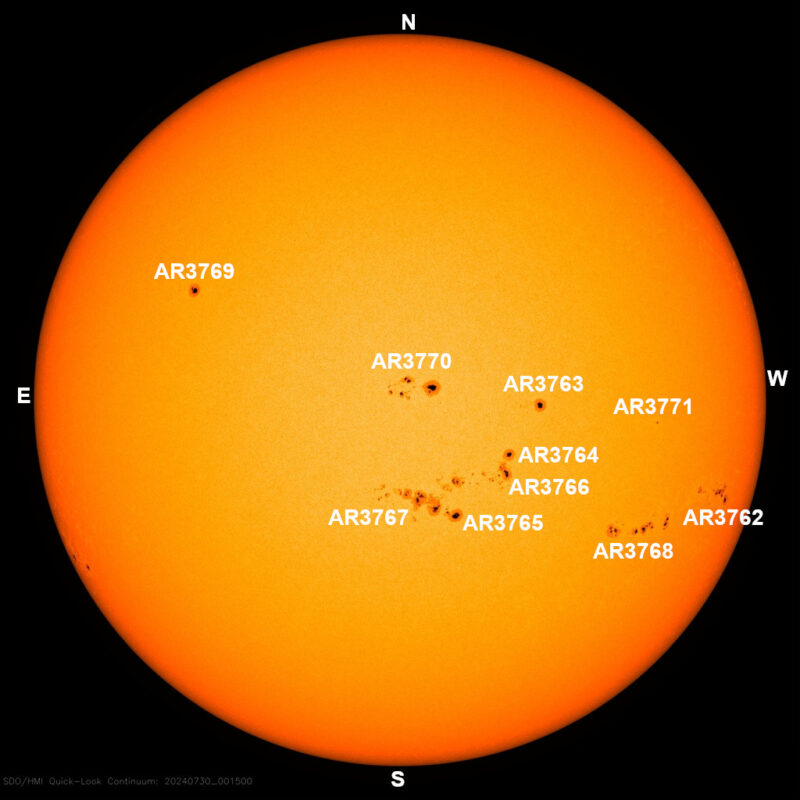
? Sun news July 29: KaBang! X1.5 flare and sun stuff on the way
? ? KaBang! An X1.5 solar flare was released early this morning at 2:33 UTC on July 29. This flare, along with many of the flares, has CMEs associated with them.
? MORE at EarthSky: https://t.co/xD29wLfm4e pic.twitter.com/YWZihs48VM
— Dr. C. Alex Young (@TheSunToday) July 29, 2024
Sun news July 29: KaBOOM! X1.5 flare and sun stuff on the way
Today’s top story: The sun released an X1.5 solar flare early this morning (2:33 UTC on July 29). This flare, along with many of the M flares over the past two days, has a coronal mass ejection (CME) associated with it. CMEs from July 27 and July 28, mentioned in the video below, created a cannibal CME, which is expected to reach Earth on July 31-August 1. We await the space weather forecaster analysis of the CMEs for the past 24 hours, but there are more than likely a few more on the way to Earth’s vicinity. With all of these CMEs and their resulting (expected) geomagnetic storms, it’s a good time to get ready for some aurora-watching. This is certainly true for higher latitudes, but it could also be true for northern-tier U.S. states. Stay tuned for aurora forecast updates.
Last 24 hours: Sun activity is high. Solar activity increased slightly over the past 24 hours (11 UTC yesterday to 11 UTC today). The sun produced an X1.5 flare, six M, and ten C flares. The largest event of the period was an X1.5 at 2:33 UTC on July 29. The complete list of X and M flares is:
• M1.7 on July 28 at 11:28 UTC from AR3762. R1 (minor) radio blackout over the Atlantic Ocean.
• M2.6 on July 28 at 12:43 UTC from AR3767. R1 (minor) radio blackout over the Atlantic Ocean.
• M1.7 on July 28 at 13:46 UTC from AR3768. R1 (minor) radio blackout over the Atlantic Ocean.
• M1.3 on July 28 at 18:08 UTC from AR3768. R1 (minor) radio blackout over the U.S.
• M1.9 on July 28 at 20:25 UTC from AR3762. R1 (minor) radio blackout over the Pacific Ocean.
• X1.5 on July 29 at 02:33 UTC from AR3764. R3 (strong) radio blackout over East Asia.
• M1.0 on July 29 at 05:10 UTC from AR3768. R1 (minor) radio blackout over East Asia.
AR3762 produced the most M flares, with five. AR3767 produced four and AR3768 produced three. AR3763-65 and AR3770 all increased slightly in size. AR3762, 68, and 69 decreased sightly in size. AR3762 maintained its beta-gamma-delta magnetic complexity. AR3765 and 68 also gained beta-gamma-delta magnetic complexity. AR3764, AR3766, and AR3770 have beta-gamma complexities. The remaining have alpha or beta. The sun has ten sunspot regions on the Earth-facing disks.
Next 24 hours: The chance for C flares is 99%. The chance for M flares is 75%. The chance for X flares is 20%.
Next expected CME: Two Earth-directed CMEs were observed in coronagraph imagery. The first CME was associated with yesterday’s M9.9 flare. This halo event was first observed in LASCO C2 at 2:24 UTC on July 28. It is expected to arrive mid-to-late on July 30. The second CME is expected to glance Earth on late July 31 to early Aug. 1.
Current geomagnetic activity: Earth’s magnetic field is quiet at the time of this writing (11 UTC on July 29). Periods of G1 (minor) geomagnetic storms are likely late today due to the possible arrival of a CME from July 27. Periods of G3 (strong) storming are likely on July 30, with G2 (moderate) storm periods likely on July 31, due to the anticipated arrival and passage of multiple CMEs from July 27-28.
The sun in recent days
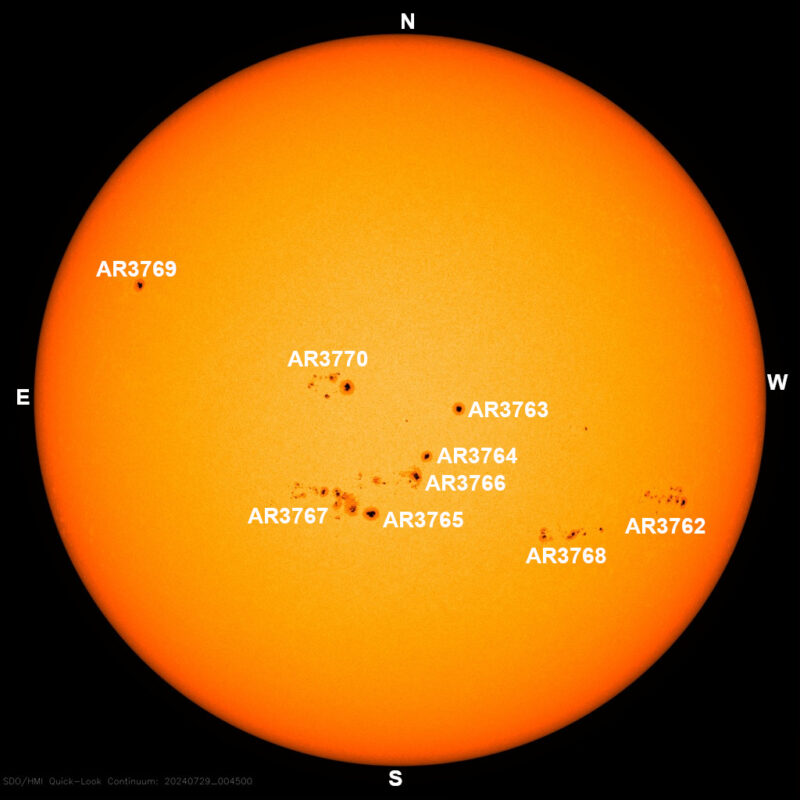
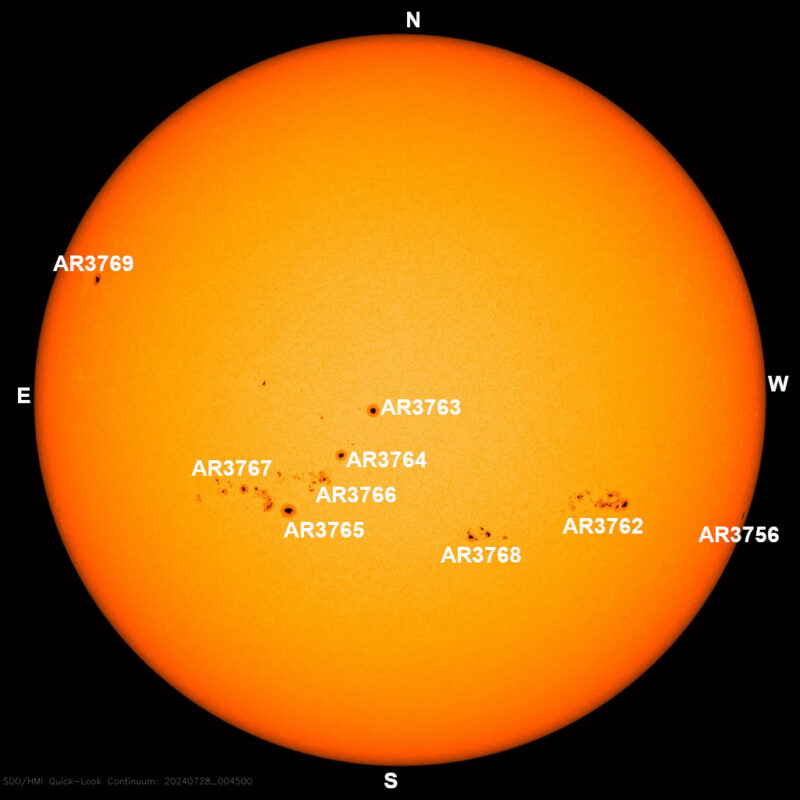

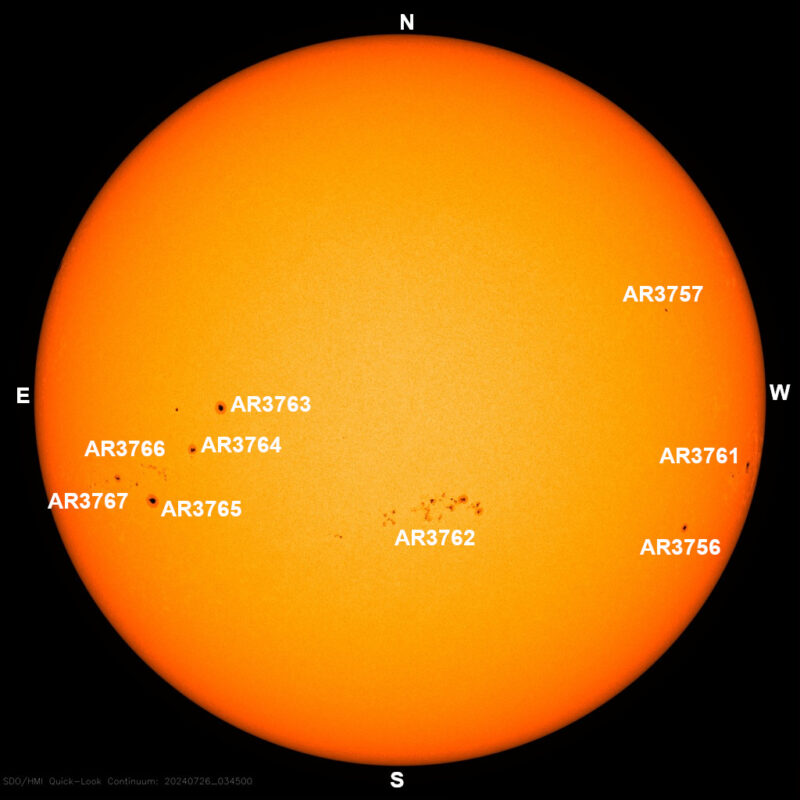
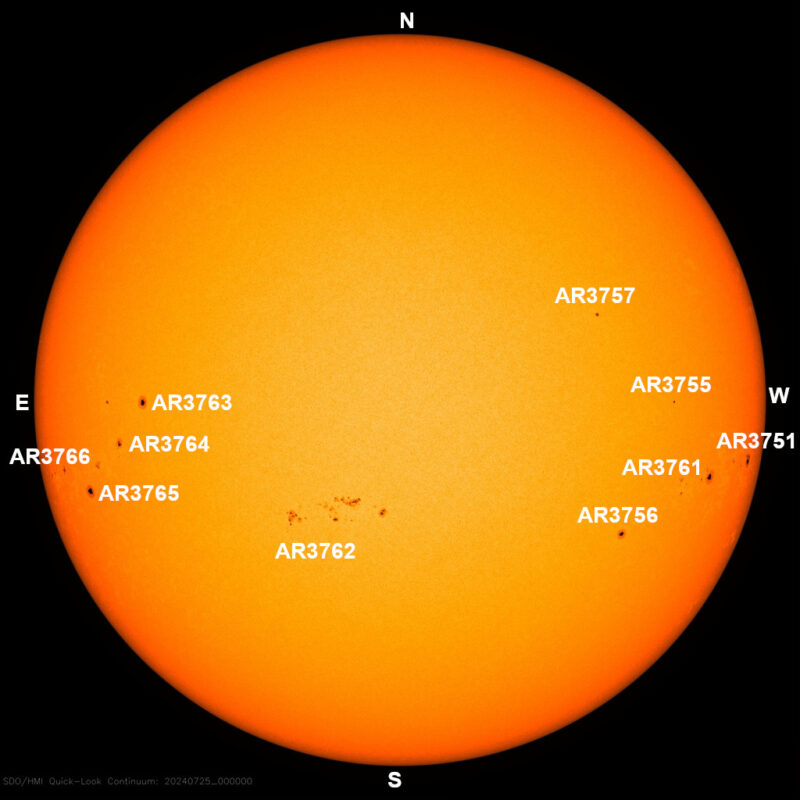


Sun images from our community
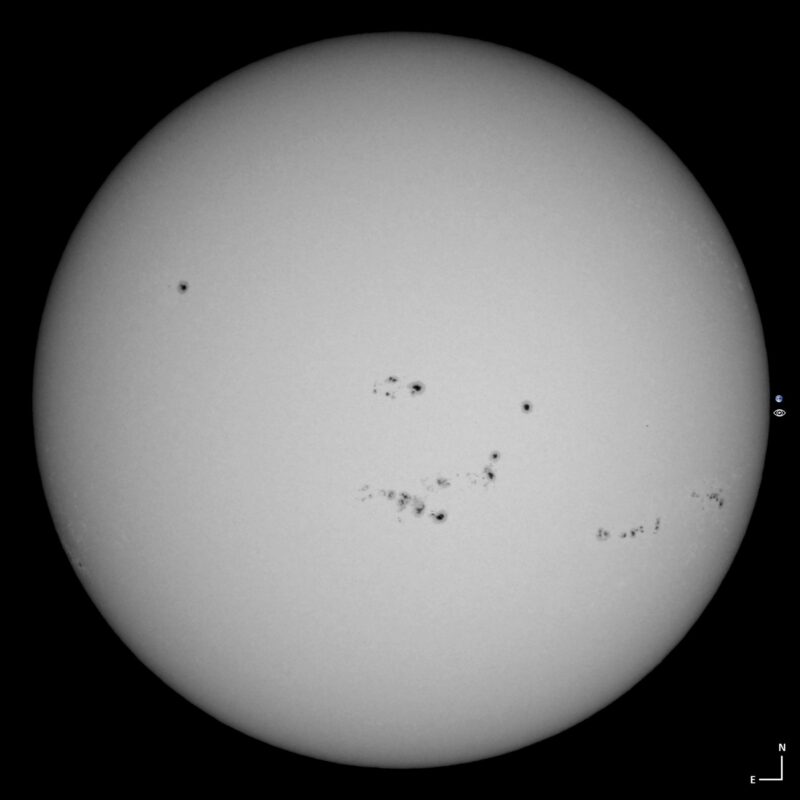

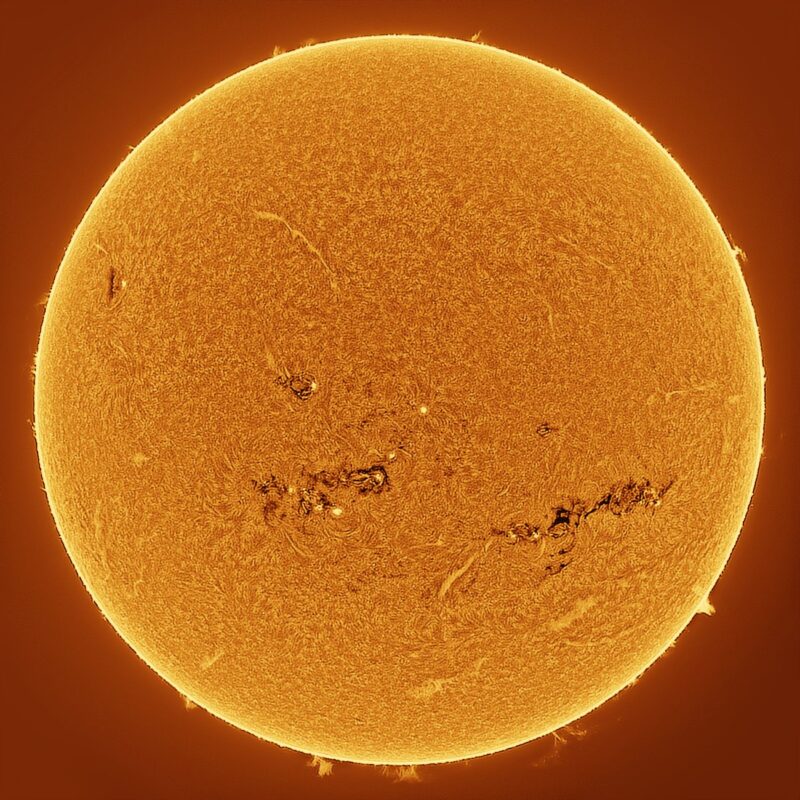
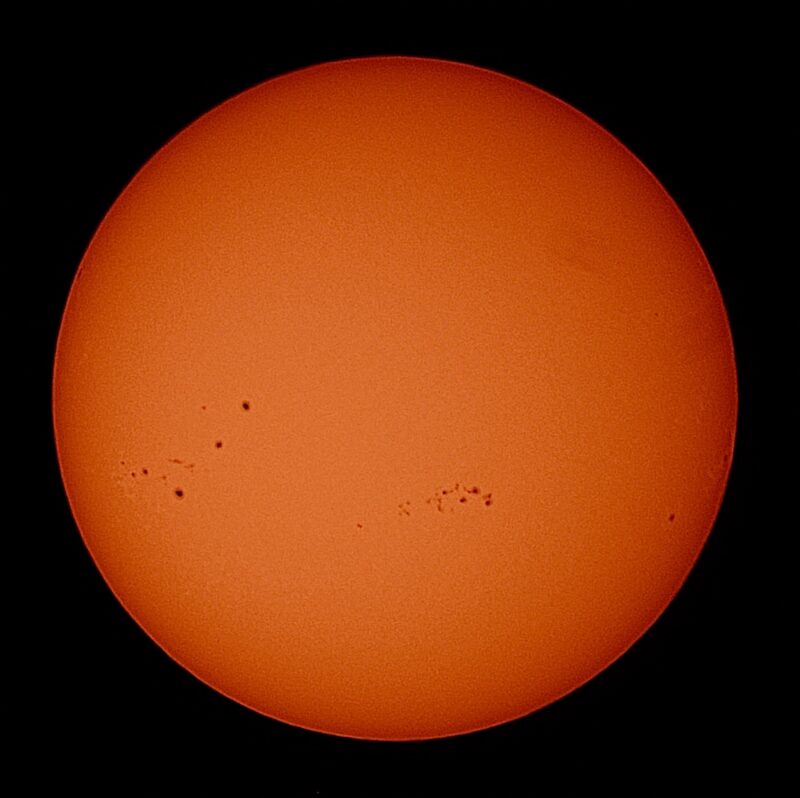

Are you a fan of sun images? We invite you all to send us your beautiful recent photos of sunspots and auroras. We love receiving them and sharing them! And to those of you who’ve already posted a photo to our community page, thank you.
Bottom Line: Sun news for July 29, 2024. Sun activity is high. An X1.5 flare came from the sun along with CMEs that are on their way to Earth. Aurora watchers get ready.











